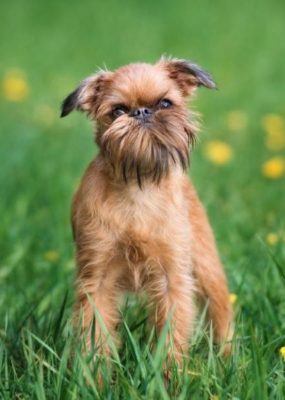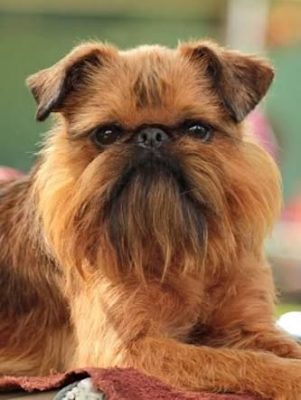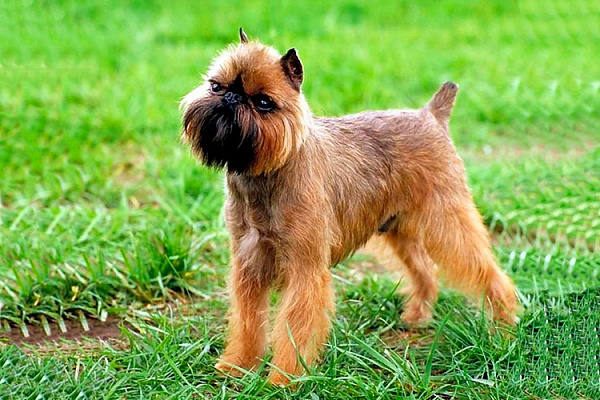Griffon Bruxellois
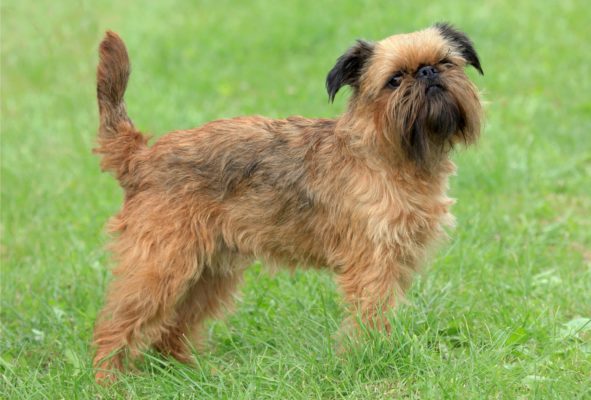
The energetic and sociable griffon is a one-owner dog. The Griffon Bruxellois will love only one person and will not be separated from him. Consequently, loneliness is difficult for the dog. It is not very friendly to children, will not tolerate shenanigans of kids, may even growl.
Table of Contents
Breed Information
| Another Name | Brussels Griffon |
| Origin | Belgium |
| Height | Males 27-32 cm Females 25-30 cm |
| Weight | 3-6 kg |
| Fur | Medium length |
| Color | Black, black and tan, black mixed with reddish-brown |
| Lifespan | 12-15 years |
| FCI Classification | Companion and Toy Dogs |
| Group | Decorative dogs, dogs for children, dogs for the apartment |
| Price | $500-1100 |
Breed Photos
Origin History
The Griffon Bruxellois first appeared in Belgium in the 18th century. The breed originated from a cross between an Affenpinscher, a toy English spaniel, and a griffon. Initially, the dogs were kept in stables for catching mice because they got on well with horses. In the XIX century, the pet was trendy among the nobility. A great admirer of Griffons Bruxellois was the Belgian Queen Maria Henrietta, who began to breed these dogs actively. The first standard for the breed was written by Belgian breeders back in 1883. Since the same time, the dog has participated in exhibitions.
At the end of the 19th century, the griffon came to England, and a few years later to the United States. During the two world wars, the population of the already rare breed almost disappeared. American and British breeders saved the situation. The official standard of the griffon appeared in 1963 and is still valid today.
Appearance
The Griffon Bruxellois is a rough and stocky dog of small size. It has a square body. Its back is strong and muscular, and its abdomen is taut. The neck is high and of medium length. The pet’s head is round and large. Its muzzle is very short, just a couple of centimeters, and its nose is turned up. Ears are set high, small in size. The eyes are large, round, brown.
The limbs of the dog are muscular, with round black paws. The tail is high, not twisted. It is possible to cut it to ⅔ length. The coat is of medium length, thick and coarse. Colors can be black, beige, red, and brown.
Character
The energetic and sociable griffon is a one-owner dog. The Griffon Bruxellois will love only one person and will not be separated from him. Consequently, loneliness is difficult for the dog. It is not very friendly to children, will not tolerate shenanigans of kids, may even growl.
Griffons Bruxellois are not particularly pitiful, behave guardedly, and can show aggression. Guarding qualities are developed at a good level. However, little protectors do not pose a physical threat to strangers but always alert to their presence with a loud bark. With other animals, griffon gets along perfectly.
Care
The Griffon Bruxellois needs comfortable living conditions in a cozy apartment. The active and energetic dog requires daily long walks in the fresh air. He is very inquisitive, likes to run and travel a lot. So take the dog for at least an hour and a half of walks a day.
Thick coats require combing with a special combing machine several times a week. Sideburns, whiskers, and a beard should be brushed every day to prevent hair tangles. Trimming should be performed regularly. Bathe the dog rarely, no more than twice a month, not to damage the coat. It is important to clean your dog’s eyes and teeth constantly.
Training
The Griffon Bruxellois is not the ideal dog for training and needs early socialization. On the one hand, the pet is sharp-minded but at the same time stubborn and willful. He is no stranger to leadership qualities. Therefore, in the process of training, you will have to show perseverance and patience.
If your dog fails, be patient, don’t yell or use brute force. Encourage your dog with strokes and treats after a successful performance. You could use agility training or try your dog in other sports.
Common Diseases
Dogs of this breed are not known for their strong health, but they are immune to viral and cold-related diseases. The following ailments are characteristic of griffons:
- hydrocephalus;
- distichiasis;
- prolapse of the eyeballs;
- complication of childbirth;
- cyst in the spinal cord;
- retinal atrophy;
- Perthes disease;
- narrow nostrils;
- cataract.
Long walks outdoors, good nutrition, and proper care are key to good health. Clean their eyes regularly and take them to the vet on time.
Nutrition
The Griffon Bruxellois needs a balanced diet. It should include raw or cooked meat, boneless fish, and cereals. As for meat, it should be lean; beef or chicken will do. Of cereals, you can give buckwheat, oatmeal, and rice.
Don’t forget to enrich your pet’s body with vitamins and minerals. For this purpose, feed your pet with fruits and vegetables. Occasionally give your dog low-fat dairy products and eggs. Eliminate spicy, salty, fatty, pickled foods with spices and milk, smoked meats, carbohydrates, beans, bones, and sweets.
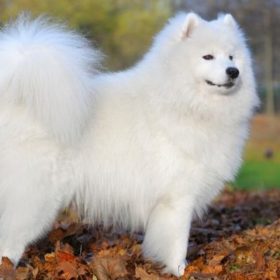 Samoyed
Samoyed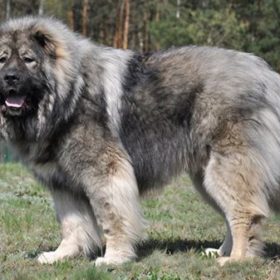 Caucasian Shepherd Dog
Caucasian Shepherd Dog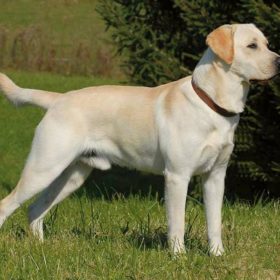 Labrador Retriever
Labrador Retriever Thai Ridgeback
Thai Ridgeback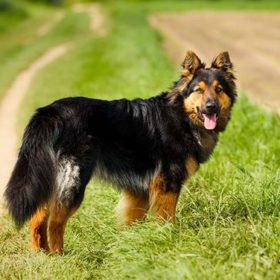 Bohemian Shepherd
Bohemian Shepherd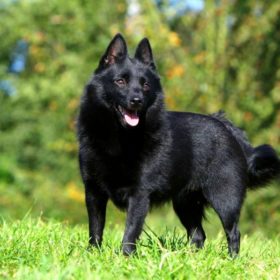 Schipperke
Schipperke